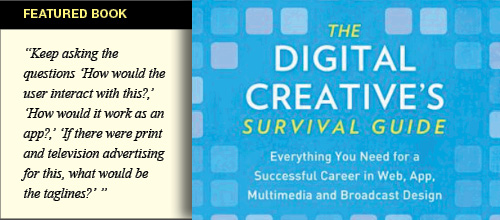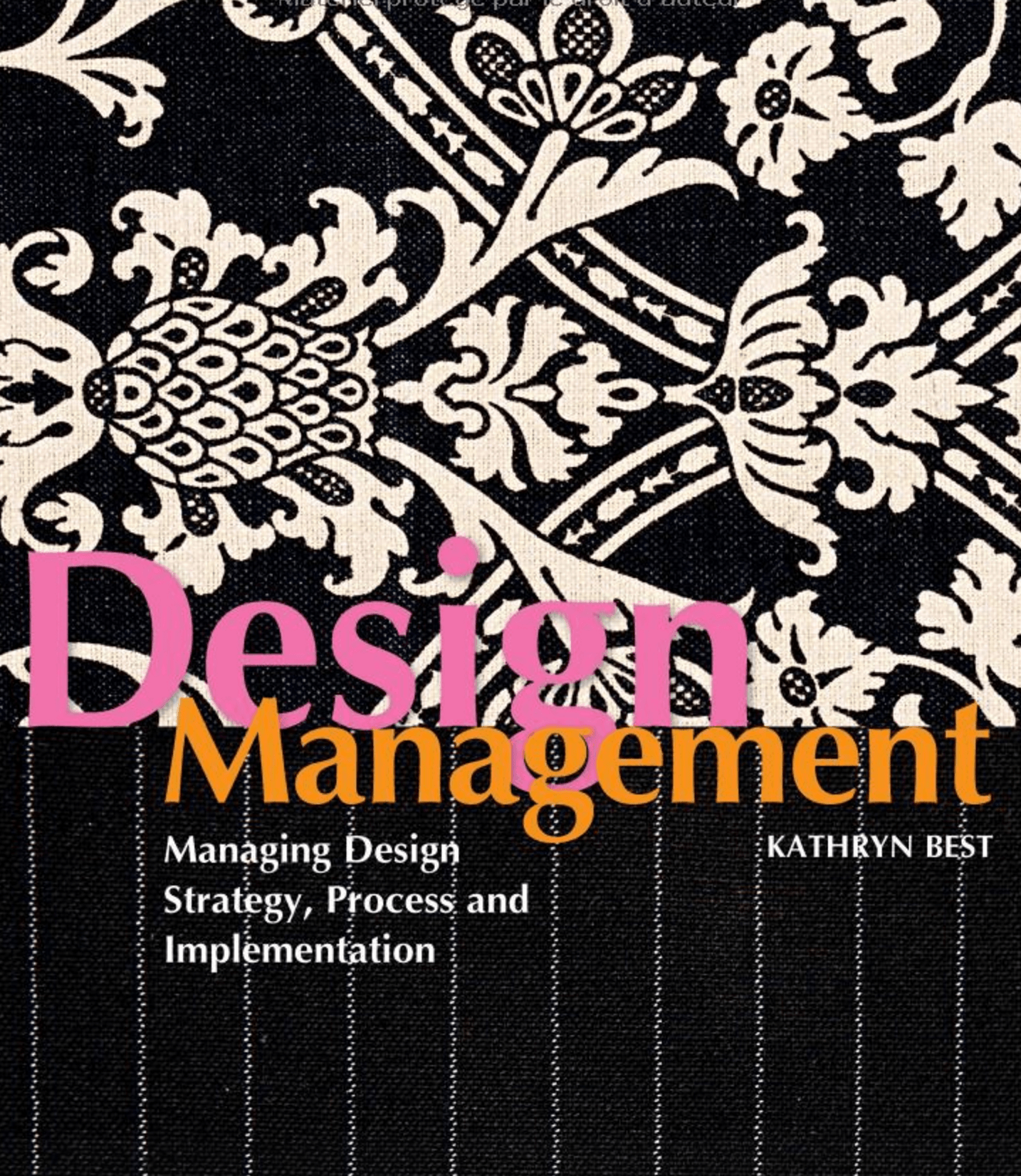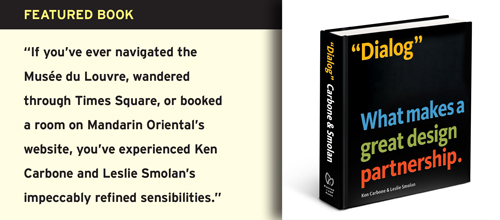
Description: The Digital Creative’s Survival Guide is the essential read for staying inspired, informed, and employed. This must-have guide is packed with practical advice on topics like managing studio politics, dealing with nightmare clients, using good digital project management practices, understanding design briefs and finding your niche in a constantly changing industry. Through interviews with successful creatives from around the world and deconstructions of digital design projects that worked, you’ll learn how to take control of your careers and stay relevant no matter what happens in the industry.
About the Author: Paul Wyatt is an award winning creative director, writer and filmmaker. He has produced short films, websites, apps and brand identity creative for clients such as the BBC, Cadbury, Virgin Media, Daft Punk, PlayStation, Adobe and many others. He is a regular writer for a number of design and technology publications.
Excerpt:
The successful creative meeting
If you’re preparing a creative meeting don’t “bulk out” the meeting by inviting people who shouldn’t really be there and whose time would be best spent doing something else. Ask yourself is your meeting (a) a purely conceptual/brainstorming session, or (b) a project update. “A” shouldn’t really involve project managers or account directors, as you most probably won’t be discussing deliverables, deadlines or budgets. “B” should involve the account director, creative lead, project manager, developer etc. Inviting the wrong type of people to the wrong types of meetings can be disastrous. A blue-skies ideas concept meeting, for example, could turn into:
Creative: “So this is a great idea, yeah? How about we have a house that turns into world famous landmarks like the Tower of London or the Taj Mahal and then…”
Project manager: “Where would you source the Tower of London image? What would be the cost? How long would we need the rights for?”
Creative: “Er…”
Project manager: “Is there any way it could turn into the Leaning Tower of Pisa?”
Developer: “Is this going to be a 3-D render?”
Project manager: Okay, so I need to budget for a 3-D artist? How long would it take to render the Taj Mahal?”
Have the lovely and fluffy creative conversations out of the way before you involve those who need to create timelines and project plans. Meetings aren’t made successful by inviting lots of people but instead by inviting the right people.
Magpie inspiration
Creative meetings shouldn’t be about going online and ripping off other people’s ideas. For a kickoff creative meeting, try banning any online usage and instead look at the brief and ask each team member to come up with the wackiest, zaniest most off–the-wall idea for the campaign/project. Each of these ideas isn’t allowed to associate with an existing campaign or piece of work online or on TV. Nobody is allowed to judge what is said, and each idea is written on a white board. Now look at the brief again and, with the team, discuss in which order the ideas should be categorized as most relevant to the campaign. Now work through them again and come up with a hybrid of all the ideas to make one relevant one.
What you’re essentially doing is taking a “blue-skies” idea and bringing it a little bit nearer the ground while retaining the best and most original parts of the original concept. Keep asking the questions “How would the user interact with this?,” “How would it work as an app?,” “If there were print and television advertising for this, what would be the taglines?” and so on. You’ll find that these questions generate solutions that also generate additional questions—all of which fit under the umbrella of the original concept. This is a far more interesting creative discussion that sitting in front of a screen and saying, “Okay, so Amazon is doing this and I noticed that ASOS is displaying their products like this … So if we do a bit of that and add this functionality that eBay has …” Now, that’s not very original, is it?
Stand and deliver
If you’re doing daily project status updates, think about doing them standing up. None of us like to be on our feet too long and it’s a tried-and-true technique for keeping a meeting short.
Keep it short and prepare
For project status meetings, plan what pertinent points or open issues you want to bring up. If your open issues are liable to take the project status meeting in a different direction—which doesn’t involve anyone else there—then agree to continue these discussions during a one-on-one with the relevant person outside of the current meeting. Nobody wants to listen to a person’s issues being raked over with a senior member of staff if the issues don’t affect them. This is what a one-on-one with your team leader is for, and this type of issue should be reserved for that time.
The politeness factor
After having presented three creative ideas to a client, there always is a sense of anticlimax afterwards. What we’d love them to do is to burst into applause, screaming, “My God, you’re a creative GENIUS” or “These ideas are so good I want to use them ALL.” It’s an awkward situation for them and you, as they need time to digest what they’ve heard and seen. They’ve literally been put on the spot, so don’t be disheartened if they want to go off and “get back to you” with their thinking. This is a good thing. Forcing the issue during the meeting will possibly force a few oohs and ahhs out of them but it won’t be a considered response. They may even feel the need to be overly critical because of pressure to say something. Give them a bit of time to think.
Involve the client
After you’ve locked down a creative concept for a piece of work, don’t be afraid of touching base with the client by involving them in creative discussions as the project progresses. Introduce them to the team, involve them in “What do you think?” conversations. This will iron out any potential problems later on and can keep a project on track and on budget.
Did they just say that?
When presenting to a client, keep the creative team “on the same page” or, as another worn expression puts it, “singing from the same hymn sheet.” I’ve been in pitch meetings where creatives unused to client/agency meeting etiquette have become loose cannons by throwing in new ideas that take a project in a completely new and financially unrealistic creative direction. It’s then left to the senior designer or creative lead to manage the (massively raised) client expectations.
The Digital Creative’s Survival Guide is available at My Design Shop.





